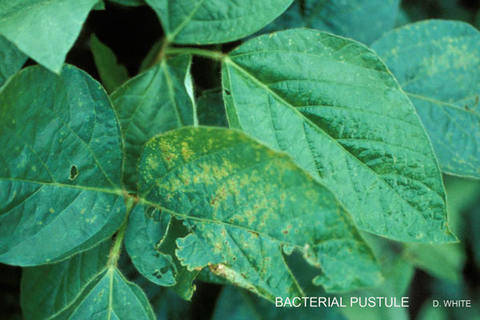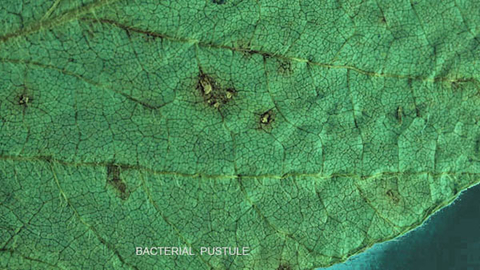Bacterial pustule is most common in areas prone to frequent warm and wet weather. The disease rarely causes defoliation and reduced yields. Early symptoms of bacterial pustule look similar to bacterial blight. Bacterial pustule can be differentiated by a lack of water soaking at the initial site of infection, less chlorosis around lesions, and by the formation of tiny tan bumps on the undersides of leaves. The pustules can be mistaken for those of soybean rust, however, bacterial pustule does not have an opening in the pustules or masses of spores like those of soybean rust.
Symptoms
Symptoms begin as small, light green spots (not water-soaked) with raised centers on the upper and lower surfaces of leaves. Light-colored pustules (blisters) often develop in the center of lesions, especially on the undersides of leaves. The lesions can grow together into large irregular brown areas. The infected areas may tear away from the leaf. Small raised spots may also develop on pods.
Conditions and timing that favor disease
The disease can occur at any time during the growing season and is favored by warm, wet weather conditions.
Causal pathogen
Bacterial pustule is caused by the bacterium Xanthomonas axonopodis pv. glycines. This pathogen overwinters in unburied crop residue and on seeds. The pathogen can be transmitted by seed, and can be spread by windblown rain, rain splash, and by machinery during wet conditions. Bacterial pustule can also infect snap beans.
Disease management
Plant resistant varieties and use pathogen-free seed to help manage bacterial pustule. Rotate soybeans with non-host crops. Plowing may be beneficial in fields where bacterial pustule is common. Avoid field cultivation when the foliage is wet.
Reviewed in 2018



